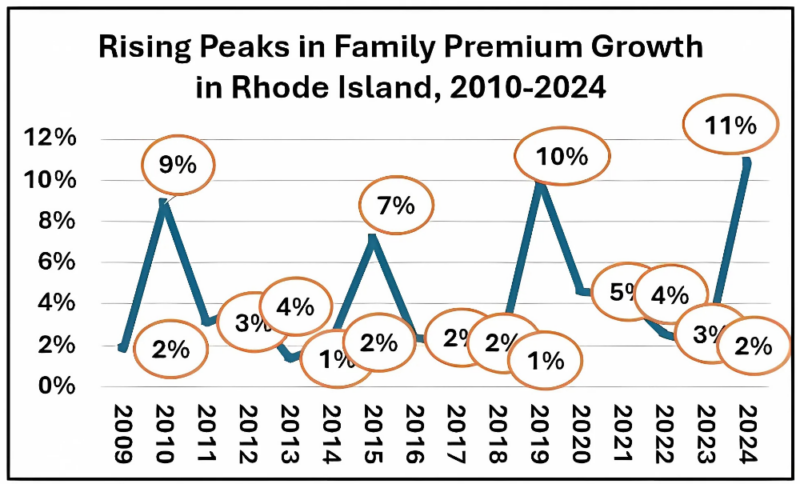
The chart illustrates a troubling pattern in the growth of family health insurance premiums. Over the last fifteen years, premiums have not only risen steadily but have also experienced recurring spikes. Peaks of 9% in 2010, 7% in 2015, 10% in 2019, and 11% in 2024 make clear that the periods of rapid cost acceleration are becoming more pronounced. Instead of stabilizing, these premium spikes are trending higher over time.
What the chart does not show is even more concerning. Family premiums rose 11% again in 2025, and employers are now bracing for increases of 20% or more in 2026. These are levels of escalation far beyond the underlying economy, well above the Consumer Price Index, and unsustainable for both employers and employees. The fact that premium growth is accelerating rather than moderating strongly suggests that incremental adjustments are no longer enough.
For employers, this trajectory means health insurance costs are swallowing a greater share of compensation budgets, leaving less room for wage growth and other benefits. For families, it means larger payroll deductions, higher out-of-pocket costs, and increased financial strain. These impacts are not isolated to one segment of the market: because the MEPS-IC survey reflects both fully insured and self-insured employers, the data show a system-wide failure to contain costs.
The conclusion is unavoidable. Traditional strategies have not kept premiums in check, and the evidence now points toward the need for dramatically different approaches. Payment reform, stronger alignment between hospital costs and community affordability, and greater transparency in healthcare spending are no longer optional — they are essential if we are to reverse this trend. Without decisive action, family health insurance will continue to drift further out of reach for employers and households alike.
The Medical Expenditure Panel Survey Insurance Component (MEPS-IC) is an annual survey of private employers and State and local governments. The MEPS-IC produces national and State level estimates of employer-sponsored insurance, including offered plans, costs, employee eligibility, and number of enrollees. The MEPS-IC is sponsored by the Agency for Healthcare Research and Quality and is fielded by the U.S. Census Bureau. More Data Tools
